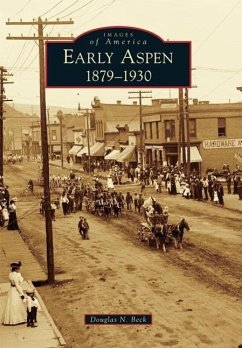Until 1879, the Roaring Fork Valley was home to a band of Colorado Ute Indians. All of that changed in the summer and fall of that year, when two prospecting teams came to the valley to stake their claims, some of which went on to produce millions of dollars of silver. Within five years, Aspen was home to over 20,000 individuals including miners, lawyers, families, businessmen, and even prostitutes. Aspen's fortune was tied to silver. More importantly, its fate was ultimately tied to the Sherman Silver Purchase Act of 1890, which required the US government to buy 4.5 million ounces of silver per month. From 1890 to 1893, the Sherman Act kept Aspen alive and growing. With the repeal of the act, Aspen began a slow, painful decline. This book covers the years of Aspen's discovery, through the years of decline, and into what is known as the "Quiet Years."
Hinweis: Dieser Artikel kann nur an eine deutsche Lieferadresse ausgeliefert werden.
Hinweis: Dieser Artikel kann nur an eine deutsche Lieferadresse ausgeliefert werden.








